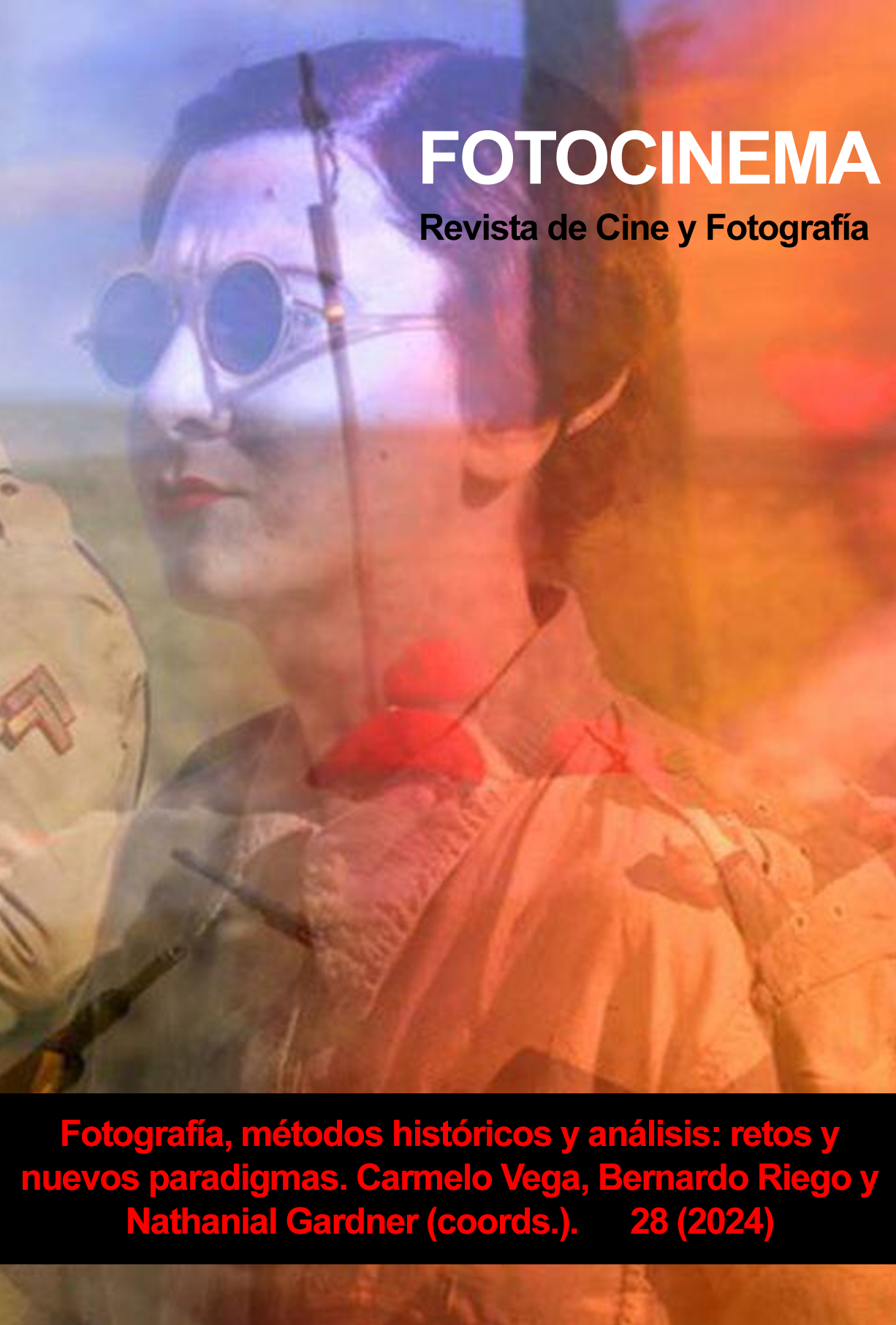Christian Franzen out of his gallery: photographs in the illustrated magazines (1895-1900)
DOI:
https://doi.org/10.24310/fotocinema.28.2024.17692Keywords:
Christian Franzen, photography, history, illustrated magazines, journalism, nineteenth centuryAbstract
Christian Franzen arrived in Madrid in the last decade of the 19th century and soon became one of the capital's most important photographers. When he opened his gallery in 1897, he gradually attracted a select clientele of social, economic, cultural and artistic elites, including the royal family. But his first steps were directed towards collaborations in illustrated magazines, at a time when the technology of photoengraving was already giving photography a valuable documentary and informative potential in the nascent modern model of the press. This research focuses precisely on his facet as a reporter on the basis of the work he did for La Ilustración Española y Americana and Blanco y Negro between 1895 and 1900. The detailed analysis of these weeklies, together with Nuevo Mundo, allows us to question the hitherto too limited notion of the scope and typology of his collaborations. It uncovers the construction of a versatile reporter who, within the technological possibilities, understood the specific language of the news snapshot.
Downloads
Metrics
References
Abad-Zardoya, C. (2005). Mujeres, arpas y libros: herencia de la pintura moderna en los fotograbados de los salones de Madrid (h. 1898). Artigrama, (20), 367-384.
Alonso Laza, M. (2004). La fotografía artística en la prensa ilustrada (España, 1886-1905) [Tesis inédita, Universidad Autónoma de Madrid].
Coloma Martín, I. (1986). La forma fotográfica. A propósito de la fotografía española desde 1839 a 1939. Universidad de Málaga.
Fontanella, L. (1981). La historia de la fotografía en España desde sus orígenes hasta 1900. El Viso.
García Felguera, M. S. (2021). Cabañas de cristal. Galerías de retrato y estudios de fotografía en España. Cabildo Insular de La Palma.
López Mondéjar, P. (2005). Historia de la fotografía en España. Fotografía y sociedad desde sus orígenes hasta el siglo XXI. Lunweg.
Monte-Cristo (2013). Los salones de Madrid. Nueva edición, notas y presentación de Germán Rueda. Rh+ Ediciones.
Sánchez Vigil, J. M. (2001). De la Restauración a la guerra civil. En Summa Artis, XLVII (La fotografía en España) (pp. 193-384). Espasa-Calpe.
Sánchez Vigil, J. M. (2007). Del daguerrotipo a la Instamatic. Autores, tendencias, instituciones. Trea.
Sánchez Vigil, J. M. (2008). Revistas ilustradas en España. Del Romanticismo a la guerra civil. Trea.
Sánchez Vigil, J. M. (2013). La fotografía en España. Otra vuelta de tuerca. Trea.
Rado Fernández, L. (2018). Recuperación, preservación y acceso a colecciones fotográficas digitales: el Fondo Franzen en RTVE. [Trabajo Fin de Grado inédito, Universidad Carlos III de Madrid].
Riego, B. (2001). La construcción social de la realidad a través de la fotografía y el grabado informativo en la España del siglo XIX. Universidad de Cantabria.
Rodríguez Mateos, A. (2023). En pago de su recibo… Franzen, fotógrafo en la corte de Alfonso XIII. Un estudio económico. En M. Olivera y L. Nebreda (Eds.), Fotógrafos extranjeros en España (1839-2023) (pp. 167-178). Fragua.
Vega, C. (2017). Fotografía en España (1839-2015). Historia, tendencias, estéticas. Cátedra.
VV.AA. (2007). Diccionario de fotógrafos españoles. Del Siglo XIX al XXI. La Fábrica.
Downloads
Published
How to Cite
Issue
Section
License
Copyright (c) 2024 Aracelí Rodríguez Mateos

This work is licensed under a Creative Commons Attribution-NonCommercial-NoDerivatives 4.0 International License.
All contents published in Fotocinema Revista científica de cine y fotografía are protected under the Creative Commons Attribution-NonCommercial-ShareAlike 4.0 International (CC BY-NC-SA 4.0) license. All about this license is available in the following link: <http://creativecommons.org/licenses/by-nc-sa/4.0>
Users can copy, use, redistribute, share and exhibit publicly as long as:
- The original source and authorship of the material are cited (Journal, Publisher and URL of the work).
- It is not used for comercial purposes.
- The existence of the license and its especifications are mentioned.
There are two sets of authors’ rights: moral and property rights. Moral rights are perpetual prerogatives, unrenounceable, not-transferable, unalienable, imprescriptible and inembargable. According to authors’ rights legislation, Fotocinema. Revista científica de cine y fotografía recognizes and respects authors moral rights, as well as the ownership of property rights, which will be transferred to University of Malaga in open access. The property rights are referred to the benefits that are gained by the use or the dissemination of works. Fotocinema. Revista científica de cine y fotografía is published in an open access form and it is exclusively licenced by any means for doing or authorising distribution, dissemination, reproduction, , adaptation, translation or arrangement of works.
Authors are responsable for obtaining the necessary permission to use copyrighted images.













13.png)




